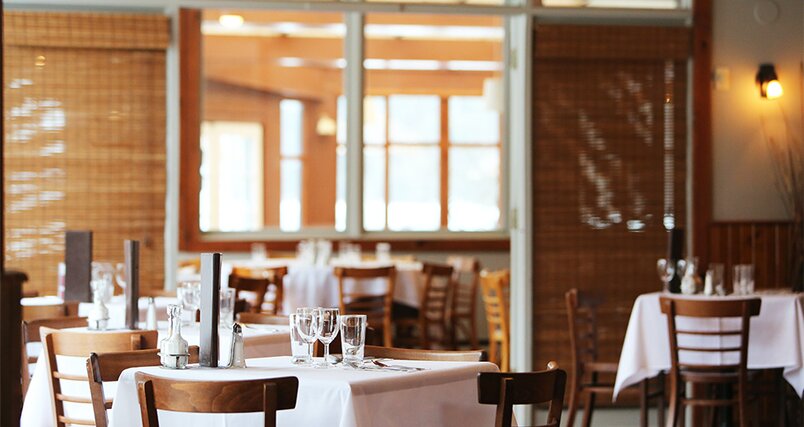By using digital technologies, gastronomy has been able to continue to connect with its customers during the critical times of the Corona pandemic and offer its food for delivery or take-away services. This has made many restaurateurs realize how relevant and indispensable – especially in times of crisis – a good Internet presence and online communication are for maintaining their restaurant business.
The foundation of the online presence is a gastronomy website, which is a kind of digital business card. It effectively represents the restaurant to the outside world, draws attention to your food offerings, and provides guests with all important contact information at a glance. We show you why it is worth creating a website for your gastronomic business and give you five tips on how to realize its full potential with a few optimizations.
Gastronomy website as an elementary component of the customer approach
In the age of the Internet, having your own restaurant website is the first step to setting up your restaurant digitally. An Internet presence allows you to be found online by potential guests and draw attention to your culinary offerings. In this way, customers can view all important information about the location, menu, reservations and take-away offer in advance of their visit to the restaurant and contact you if they wish. Often the first impression counts, therefore the website for your gastronomy should not be left to chance and should be designed professionally as well as representative for your ambience.
5 tips for a great gastronomy website
A website is your virtual business card and should invite users to visit your restaurant. You can take some steps to improve the online visibility of your gastronomy website and make it appear more attractive and user-friendly. These five tips will help your website contribute to the success of your gastronomic business.
1. Regular updates to the website
Your website should always be up to date. Along with a modern content management system and a responsive design optimized for mobile devices, the topicality of the content plays a major role. After all, your homepage is the first place customers go to get specific information about your restaurant. If you manage your gastronomy website yourself, you should always make sure that all changes such as contact details, opening hours or menu updates are entered in a timely manner. If you have integrated an online ordering function or the option for online reservations, you should regularly check whether all processes are working properly. Both the creation of a website for your restaurant and the updating processes can be quite time consuming. So it is worth considering outsourcing these tasks to a professional agency.
2. Digitizing the menu
The menu is the flagship of every restaurant. In many restaurants, the menu is displayed in front of the door, so guests can find out about the culinary offer before entering the establishment. This should be reflected in the same way on your gastronomy website. Make the menu easily visible and just a click away on your homepage. This allows users to quickly get an overview of your dishes and beverage offerings. The digital menu also offers the advantage of being easily accessible to every guest on site via smartphone using a QR code. Especially in times of pandemic, this is a safe and hygienic alternative to the physical menu.
Avoid offering the menu on your website as a downloadable PDF document only. This has a few disadvantages – both for search engines and your customers. On the one hand, the content can be read and indexed less easily by Google in this form. This means your menu is less likely to show up in search results on specific queries. On the other hand, it often takes more effort for your guests to download the PDF file on their smartphone first if they want to quickly find a good restaurant nearby. So the ideal solution is to provide the menu as a separate HTML page.
3. Search engine optimization and advertising
In order for your gastronomy website to be easily found online, its placement in Google's search results must be optimized. There are basically two ways to improve search engine ranking: SEO (search engine optimization) as a free and long-term strategy that focuses on website optimizations, and SEA (search engine advertising) as paid advertising in the form of Google Ads. Both strategies allow you to appear higher up in search results, gain more online visibility, and thereby attract more customers. While search engine advertising requires a monthly advertising budget, organic search engine optimization can be done free of charge in the form of some adjustments to your own website. Here, optimization for local search results is especially important to reach users searching for nearby restaurants.
4. Creating email campaigns
Email campaigns are a great way to keep your guests up to date with all the latest restaurant news and keep them interested in visiting again. For this purpose, set up a field on your website to sign up for the newsletter. When doing so, do not forget to ask users for permission to use their data for promotional purposes. Small email campaigns should be sent out regularly and provide information about seasonal menu specials, changes in opening hours, promotions or special events at your restaurant. Many website providers already offer integrated functions for newsletter campaigns, which allow you to create a visual recognition value by adopting the homepage design.
5. Integrating social media
Social media like Facebook or Instagram thrive on photos and topical posts, and can help reach a wider audience than just the regular guests. For this reason, it pays to include social network profiles in the restaurant's marketing strategy. Post your creative food and drink creations regularly and always remember to include the location. In this way, the chance that your postings will appear in the local search queries or suggestions increases. Additionally – even with a small budget – you can create custom advertising campaigns around your seasonal specials or promotions to reach even more potential guests. Embed your social media into the website using icons or galleries and let your visitors get up close and personal with what is going on in the restaurant.
Conclusion: Websites become indispensable for restaurants
Digitization in gastronomy has made great strides in recent months and years. It has proven to be an important tool for restaurateurs to open up new communication channels and pick-up and delivery services, and to remain operational even in times of crisis. Your own restaurant website is the first and most important step in setting up your restaurant digitally. Those who have not yet recognized this potential risk losing guests in the future and being surpassed by the competition.











